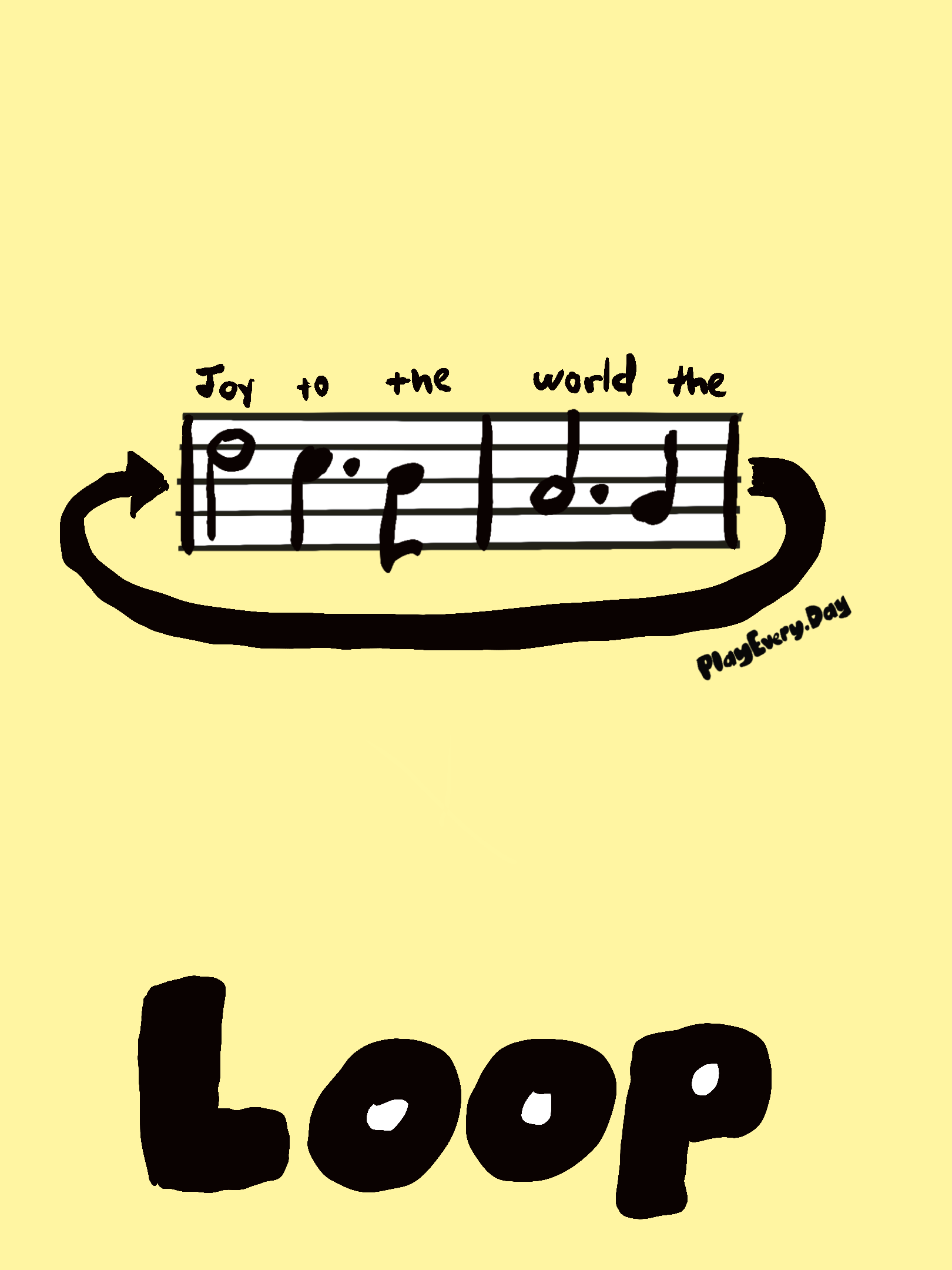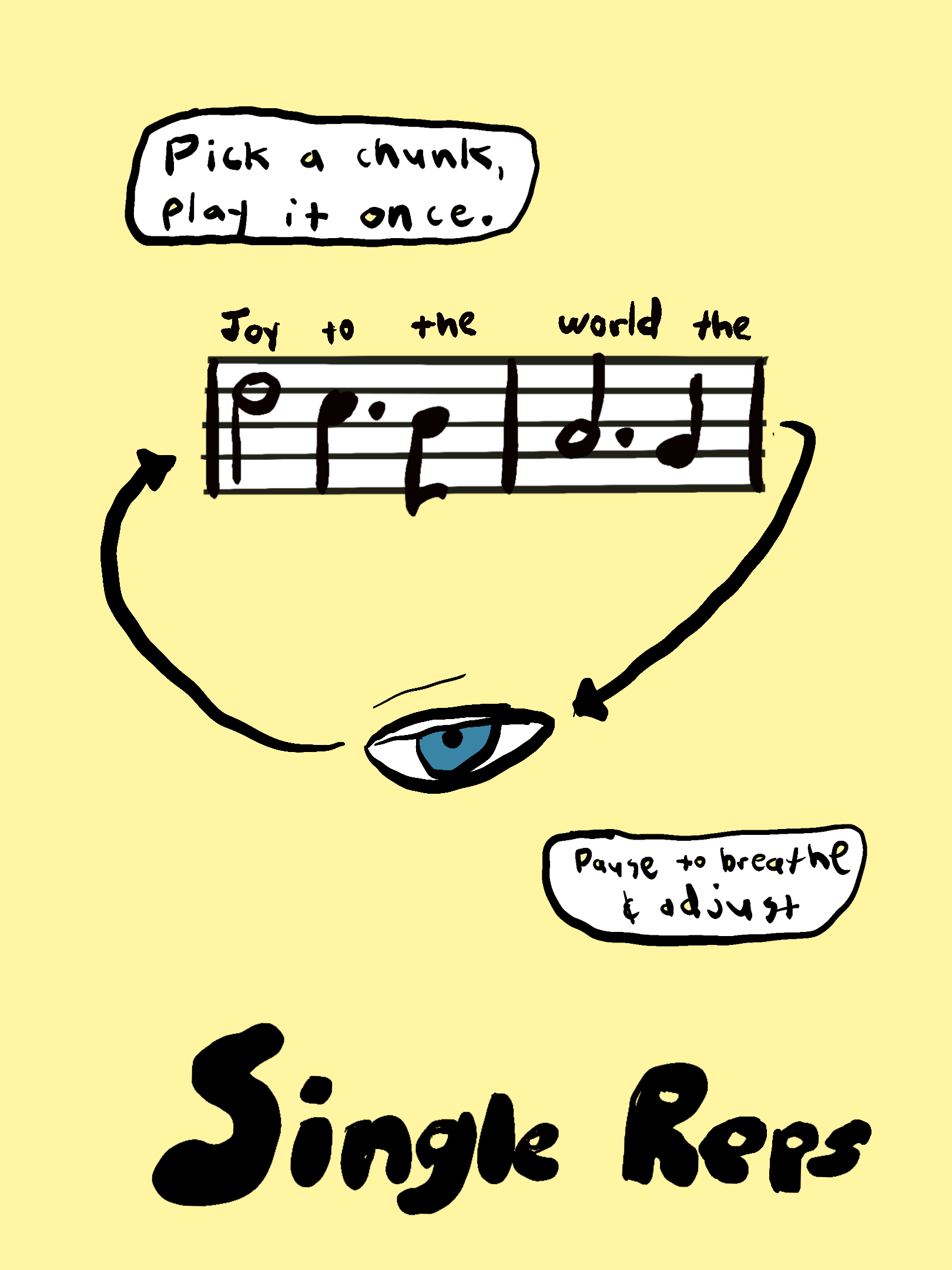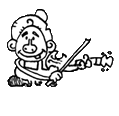Looping Practice
Looping means to play a chunk continuously until it flows.

Pick a challenging part of a tune and try to continuously play it in a slow loop. If you make mistakes or stumble, then pause and correct the mistake with single reps. Play the chunk once, then take a deep breath and repeat it.

You don’t want to practice mistakes! Once you make the correction, play the same loop more slowly. Then speed it up.
Once you iron out the kinks, looping helps you move from a state of thinking to a state of play. You’ll play with more flow, and your music will start to sound like music.
Looping can (and should) be done by musicians of any level. Everyone from absolute beginners to symphony musicians can use looping to make their practice more fun and productive. Any time you encounter a a challenge, figure it out with single reps, and then slowly loop it.
The basic idea is that instead of playing an entire piece of music all the way through every time, you pick out one very small part and learn it.
Once you get the idea of that small part, you repeat it continuously so that it creates a groove and sounds like music. Though you may be a beginner, you can play music right now.
Play the loop slow enough so that your fingers, hands and ears can really learn that part. Speed it up a little so that you can hear how it will sound in context later.
D3 3 A1 1 1 0 1 0 D2 D1

If you loop on something long enough, you’ll get to a point where you are feeling and playing the music instead of thinking about what you have to do next.
Change the loop length
If you’re trying to loop on a part and you can’t do it consistently, it means you have to change the loop length and play a smaller part. This will help you discover what’s really difficult about that part. It might just be two notes. In the Oh Susannah example above, beginning students often have difficulty going from D3 to A1.
If you can’t easily repeat on that part, then you should shorten the part and/or slow it down. You might find that the best loop is going between two notes that are difficult for you. In the example above, you may need to loop on the first two notes with simple quarter notes:
D3 A1 D3 A1

Loop on these two notes until you can do it easily. A nice practice trick is to play things with two bows:
D3-3-A1-1
This has a way of magically making a difficult part more easy.
Repeat this process for all the different parts of the songs. Eventually, make longer loops by combining quarters and looping halves, then whole parts of tunes.
Practice becomes play
When you are looping on something, it becomes fun when you stop thinking about what you are doing and really just start to enjoy playing music. You might even start to see that loop as a short piece, like a riff, or the beginning of a symphony. The key is to enjoy both the physical feeling of movement and the process of making music with such a tiny little part.
If you take your time and learn to enjoy all the little parts of a song through looping, you will learn more and learn faster. Looping, looping, looping…
Assignment
- Practice looping at least once a day within your practice session.
- Once you have a loop memorized, try to move to different parts of the room as you practice it.
- Make the loop smaller.
- Then make the original loop bigger.
- When you see the following clip in a FiddleHed video, let it be your cue to pause the video and actually loop on a small piece.
Practice this with joy every day. The next lesson in the How To Practice Fiddling course will offer you a tool to focus your practice.
